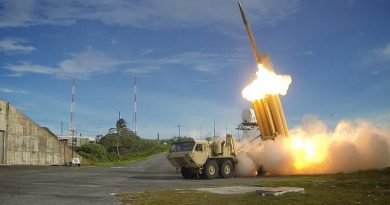Focus on Mass Migration: Myanmar
Juliet Nangini
Staff Writer
In the late 1970s, Myanmar, then known as Burma, launched a military campaign named Operation Dragon King against the Rohingya, the country’s ethnic Muslim minority, sowing the seeds for the modern refugee crisis. The country has persecuted the Rohingya through various military efforts for decades which continue today.
The Rohingya population is an estimated one million in Myanmar, which has a majority Buddhist population. Although the Rohingya can trace their origins centuries back, the government denied the Rohingya legal recognition as one of the country’s official ethnic groups. In 1982, the country passed the Burma Citizenship Law, which essentially denied the Rohingya citizenship and left many stateless. The government of Myanmar sees the Rohingya as “illegal immigrants from Bangladesh,” says BBC News.
The most recent major crisis began in August 2017 when the army launched attacks in the northern state of Rakhine, home to the highest number of Rohingya in the country. Arakan Rohingya Salvation Army (ARSA), a Rohingya militant group, conducted attacks on security forces in the Rakhine State. The military responded with attacks that forced many to migrate. Such attacks included scorching villages and homes, forced starvation, torture, as well as harming and killing civilians.
Satellite images provide evidence of the extent of the destruction of the villages. Moreover, a report conducted by Amnesty International highlights atrocities inflicted by soldiers, including rape and other acts of sexual violence against Rohingya women and girls. The government denies harming civilians and claims that they are fighting Rohingya militants. This crackdown forced many refugees to flee to neighboring Bangladesh. Zeid Ra‘ad al-Hussein, the former U.N. High Commissioner for Human Rights, addresses this crisis as a “textbook example of ethnic cleansing,” says Reuters.
Many have migrated to “the world’s largest refugee camp” in Cox’s Bazar, Bangladesh, says the UN Office for the Coordination of Humanitarian Efforts. Rohingya refugees are also migrating to Malaysia, India, Thailand, and Indonesia, although the likelihood of safety and acceptance in these countries is unclear as well. Those who remained in the Rakhine state continue to face violence and access to necessities. Human Rights Watch declares that “the conditions of the refugee camps are like an ‘open prison.'” Although Myanmar is not a member of the International Criminal Court (ICC), the body claimed it has jurisdiction in Bangladesh where the victims fled – because it is a member of the ICC, this enables the court to launch an investigation. In early 2018, Myanmar agreed to accept a certain number of Rohingya each week while Bangladesh strived to send them back all within two years. However, in March 2019, Bangladesh announced that it would stop accepting Rohingya refugees from Myanmar. Last month, Kyaw Tint Swe, Myanmar’s incumbent Minister for the Office of State Counsellor, blamed an insurgent group known as the Arakan Army for hindering the process of returning over 700,000 Rohingya, says the Associated Press.
New challenges continue to rise. With the onset of COVID-19 and the crowded conditions of the camps, the refugees are at especially high risk. In addition to health concerns, the virus is also affecting the education and futures of young refugees. The pandemic shut down education centers in the camps since March for an estimate of 315,000 Rohingya children, according to UNICEF. Recent developments also indicate an eruption of gang violence in the Bangladesh camps, causing many to flee for safety.
Currently, there are about 900,000 Rohingya in the camps in Bangladesh, according to Human Rights Watch. Unless safe conditions are restored in Myanmar with basic human rights followed, the Rohingya refugees will remain displaced in large numbers and continue to face the adversities of migration, worsened by the pandemic.


